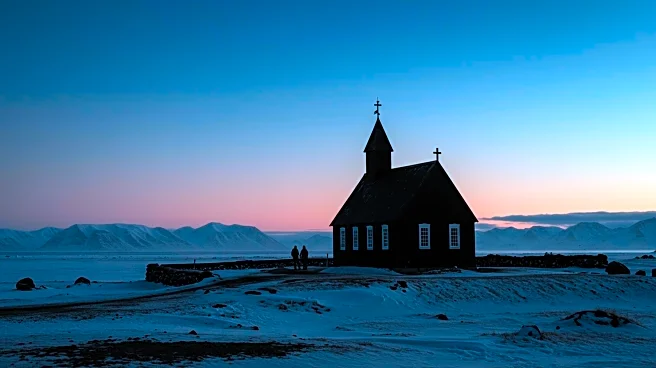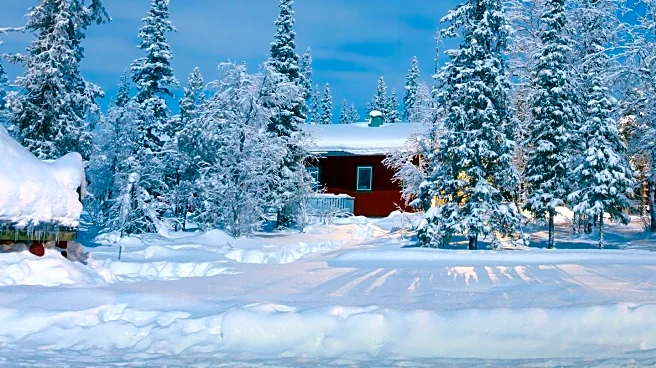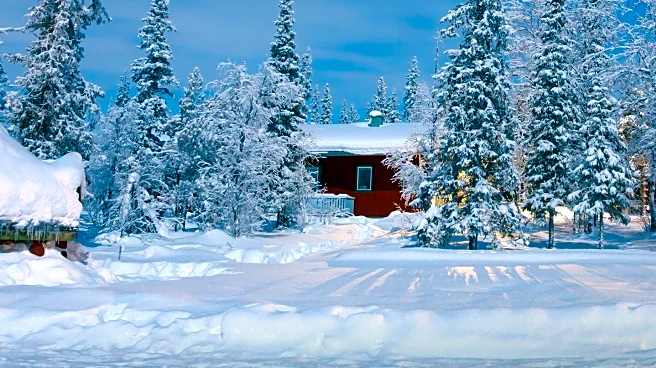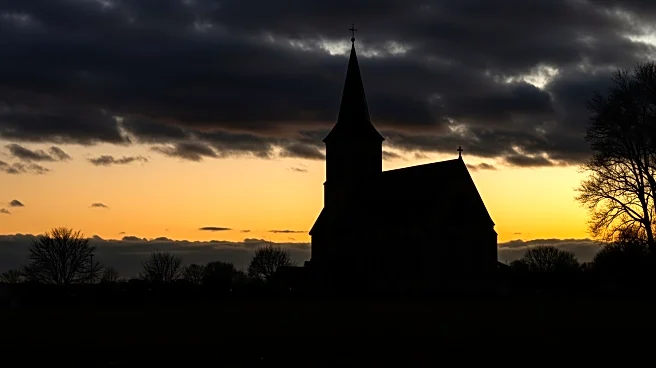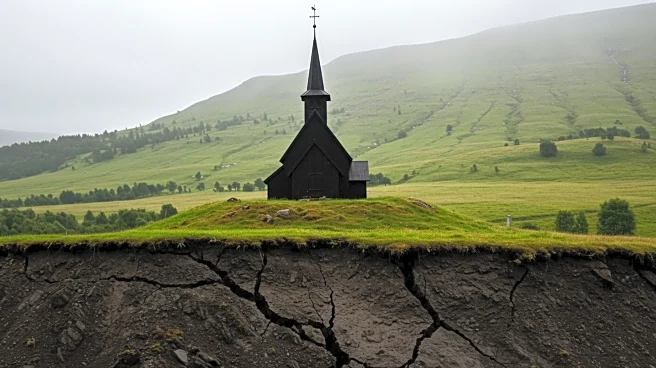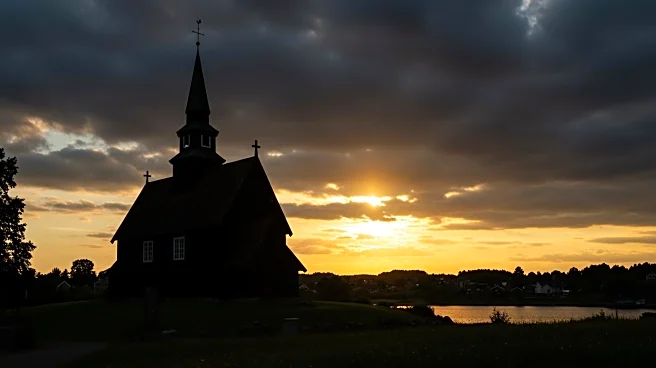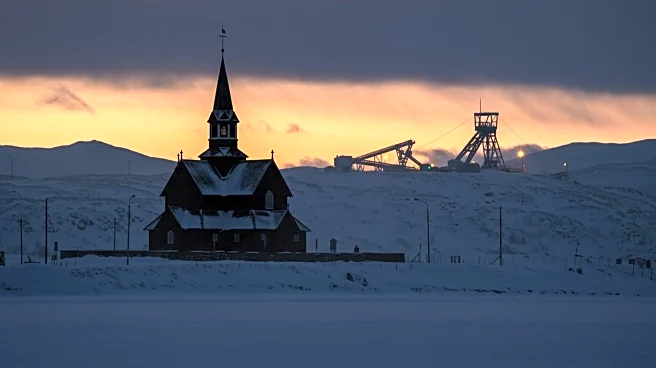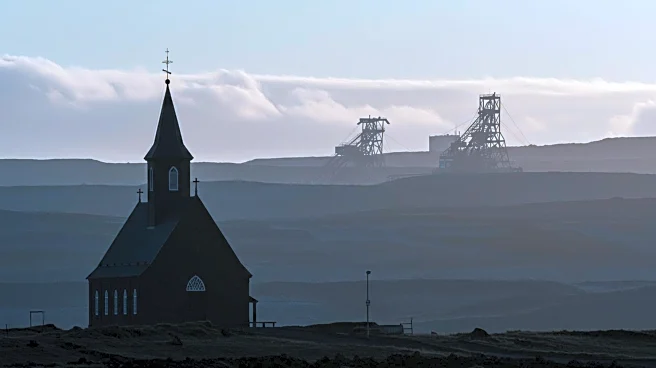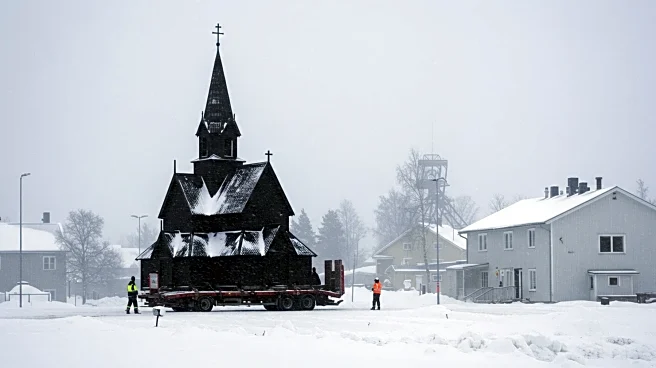Rapid Read • 8 min read
The Kiruna Church, a beloved wooden structure in Sweden, is being relocated due to the expansion of the world's largest underground iron-ore mine, which threatens to engulf the town of Kiruna. The church, known for its neo-Gothic architecture and cultural significance, is being moved three miles east as part of a broader town relocation effort. This move, orchestrated by the state-owned mining company LKAB, involves complex engineering to transport the 741-ton building. The relocation has attracted thousands of spectators and is being livestreamed by Sweden's national broadcaster, SVT. The church, originally built in 1912, was voted the best building of all time in Sweden in a 2001 poll.
AD
The relocation of Kiruna Church underscores the significant impact of industrial activities on local communities and cultural heritage. As the mine expands, the town of Kiruna is being systematically moved to prevent it from being swallowed by the mine's operations. This event highlights the tension between economic development and cultural preservation, as well as the challenges faced by indigenous communities like the Sami, whose reindeer migration routes may be affected. The relocation also showcases the engineering prowess required to preserve historical structures in the face of industrial expansion.
The church is expected to reopen at its new location by the end of 2026. The broader relocation of Kiruna's town center, which began in 2004, will continue as more buildings are moved to a safer distance from the mine. The ongoing expansion of the mine and its impact on the local environment and communities will likely continue to be a point of contention, particularly for the Sami people. The success of this relocation could set a precedent for how other communities facing similar challenges might balance industrial growth with cultural preservation.
The relocation of Kiruna Church raises questions about the long-term sustainability of mining practices and their impact on cultural and environmental landscapes. It also highlights the role of state-owned enterprises in managing such transitions and the ethical considerations involved in prioritizing economic benefits over cultural and environmental costs. The event may prompt discussions on how to better integrate indigenous rights and environmental considerations into industrial planning.
AD
More Stories You Might Enjoy
